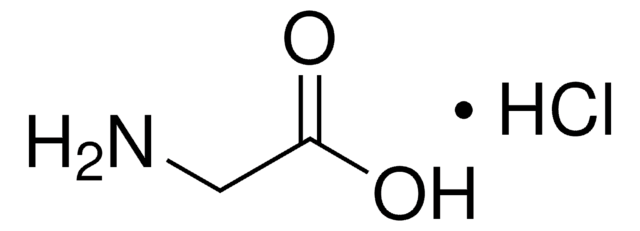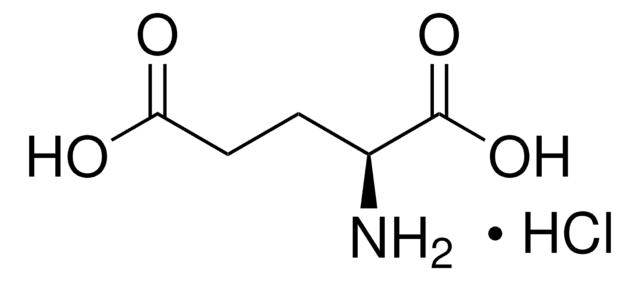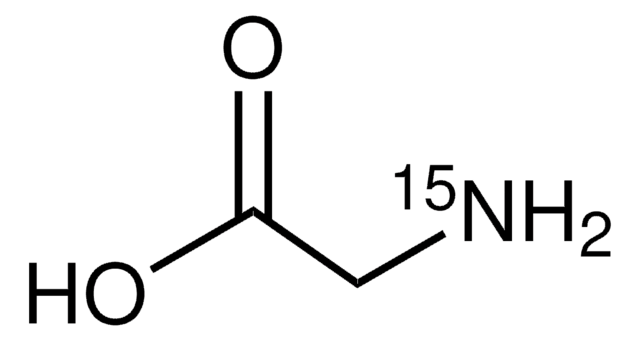G2879
Glycine hydrochloride
≥99% (HPLC)
Sinonimo/i:
Aminoacetic acid hydrochloride, Glycine HCl, Glycocoll hydrochloride, Aminoacetic acid, Aminoethanoic acid, Glycocoll
About This Item
Prodotti consigliati
Livello qualitativo
Saggio
≥99% (HPLC)
Forma fisica
powder
PM
111.53
Condizioni di stoccaggio
(Tightly closed Dry)
Concentrazione
≤100%
tecniche
immunohistochemistry: suitable
Punto di fusione
176-180 °C (lit.)
Solubilità
water: 0.5 g/mL, clear, colorless
Temperatura di conservazione
room temp
Stringa SMILE
Cl.NCC(O)=O
InChI
1S/C2H5NO2.ClH/c3-1-2(4)5;/h1,3H2,(H,4,5);1H
IVLXQGJVBGMLRR-UHFFFAOYSA-N
Cerchi prodotti simili? Visita Guida al confronto tra prodotti
Descrizione generale
Applicazioni
- in the preparation of glycine-HCl buffer
- to elute serum immunoglobulins (IgGs) from the beads in order to check for the complete enrichment of core- and site-specific antibodies
- to regenerate the sensor to elute the bound C-reactive protein (CRP)
Azioni biochim/fisiol
Prodotti correlati
Avvertenze
Danger
Indicazioni di pericolo
Classi di pericolo
Eye Dam. 1 - Skin Corr. 1
Codice della classe di stoccaggio
8A - Combustible corrosive hazardous materials
Classe di pericolosità dell'acqua (WGK)
WGK 1
Punto d’infiammabilità (°F)
Not applicable
Punto d’infiammabilità (°C)
Not applicable
Dispositivi di protezione individuale
Eyeshields, Gloves, type N95 (US)
Certificati d'analisi (COA)
Cerca il Certificati d'analisi (COA) digitando il numero di lotto/batch corrispondente. I numeri di lotto o di batch sono stampati sull'etichetta dei prodotti dopo la parola ‘Lotto’ o ‘Batch’.
Possiedi già questo prodotto?
I documenti relativi ai prodotti acquistati recentemente sono disponibili nell’Archivio dei documenti.
I clienti hanno visto anche
Protocolli
This page shows and discusses three protocols for stripping and reprobing a western blot membrane.
Il team dei nostri ricercatori vanta grande esperienza in tutte le aree della ricerca quali Life Science, scienza dei materiali, sintesi chimica, cromatografia, discipline analitiche, ecc..
Contatta l'Assistenza Tecnica.








